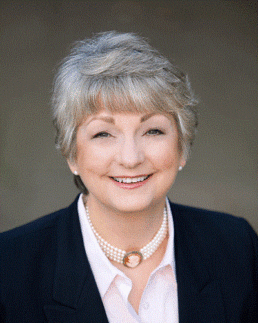
As the marketplace changes so must we or risk being left behind in the dust. Recently, I have been asked how our industry has transformed over the years. The changes have been vast, and the technology used in dealerships has increased exponentially.
While the RV lifestyle continues to grow in popularity, many campgrounds have become more like resorts. Still, others offer only minimal amenities. Regardless of the camping venue, internet accessibility is essential to our everyday lives. More folks work from home, and home can be anywhere the internet is.
When shopping for an RV, consumers surf the net to locate certain RVs with specific floorplans. Once they find their desired RV, their next step is to try to negotiate the deal over the phone and via email. As a result, a consumer’s only visit to the dealership is at delivery time.
In short, the internet has given birth to the remote consumer.
The challenge for finance is building on the relationship established by the sales associate with an unseen customer who may not even be local. Finance professionals must learn how to build a relationship through email and the phone before the customer finds a different resource for funding the purchase.
Make Contact Quickly
If the customer agrees to an RV purchase using the DocuSign platform, they are only a few clicks away from submitting a credit application to a bank or credit union. Finance personnel should contact the customer within minutes.
I have been told consumers are shopping for a lender within 8-10 minutes of agreeing to buy a specific RV. We must remember they are already at the computer, in their comfy clothes, with their beverage of choice, and they are prepared to take the next step.
Sales Sets Up Finance
The sales department’s phone call should end something like this: “Mr. Customer, thank you for your purchase. We have a sales business office that helps make all the financial transaction parts of the purchase easy for our new customers. Currently, they are assisting another customer with their purchase. May they call you in about 30 minutes? What number may they reach you at?”
Setting correct expectations from the beginning is essential.
Finance may be the department securing all initial payments on all sales. Some dealerships may have a sales manager collect the initial payment. Other dealerships may designate a sales department cashier who secures the payment.
A best business practice is to have the sales business office secure the payments. Most dealerships in high season need two people in finance to oversee remote consumers and consumers visiting the dealership.
Another best business practice is to task the finance department with creating all purchase orders. I fully realize many dealerships still delegate a sales associate to send the purchase order to the remote customer via DocuSign.
The sales manager should expedite the file to finance immediately, not at the end of the day or two days after the commitment. Time will kill a deal. Time also kills the finance department’s opportunities.
The finance department will see more success if everyone treats remote consumers as they do consumers physically at the dealership, with some degree of urgency.
Securing Financing
First things first, the sales business office should work to secure the financing for the purchase.
The presenter must make the transaction all about the dealership doing the leg work for the consumer. In doing so, the lender will only hold the title as security for the loan.
Remind the consumer other lenders who have no working relationship with the dealership can, and do, use the customer’s financial accounts in addition to the title as security for the loan.
The key to any loan is placing the consumer in a positive equity position from the beginning. To put the customer in a positive equity position, the finance presenter may require the consumer to provide a larger down payment.
Delivery Day Reminders
On delivery day, financial transactions must be completed with full transparency. All loan documents must be fully disclosed. When you are disclosing the loan documents, be thorough and on point. Answer any and all questions the consumer may have.
The interest rate charged cannot be tied to any ancillary product purchase. The rate cannot be adjusted because of ancillary product purchases. All ancillary product purchases must come after the RV’s sale and after the financing has been secured to buy the RV.
The menu is best used as a closing tool, enabling itemization and summarization of all ancillary products. If the sales business manager will present ancillary products to the customer before delivery, the business manager can email the menu to the customer. The consumer will then have all the information to make an informed decision about the various protections for their RV purchase.
Some customers will want to inspect the RV before signing any financial documents. That is understandable.
Let them do so. The finance department must conduct the financial delivery while the customer is engaged, not after they become exhausted and overwhelmed with information about the RV.
Because our industry has embraced so much technology within our RVs, you might want to create a YouTube video. Some refer to this as an “orientation video” for every product the dealership carries. The video will be a useful resource for your customer after they take delivery.
Remote consumers have become mainstream now and add to every dealership’s bottom line. Are your personnel enjoying the benefits of presenting their services and ancillary products using today’s technology?
Jan Kelly is the president of Kelly Enterprises. Kelly is an educator and consultant, convention speaker and writes frequently for industry publications. For information about educational venues or joining an F&I 20 group, call 800-336-4275 or visit www.JLKelly.com.





